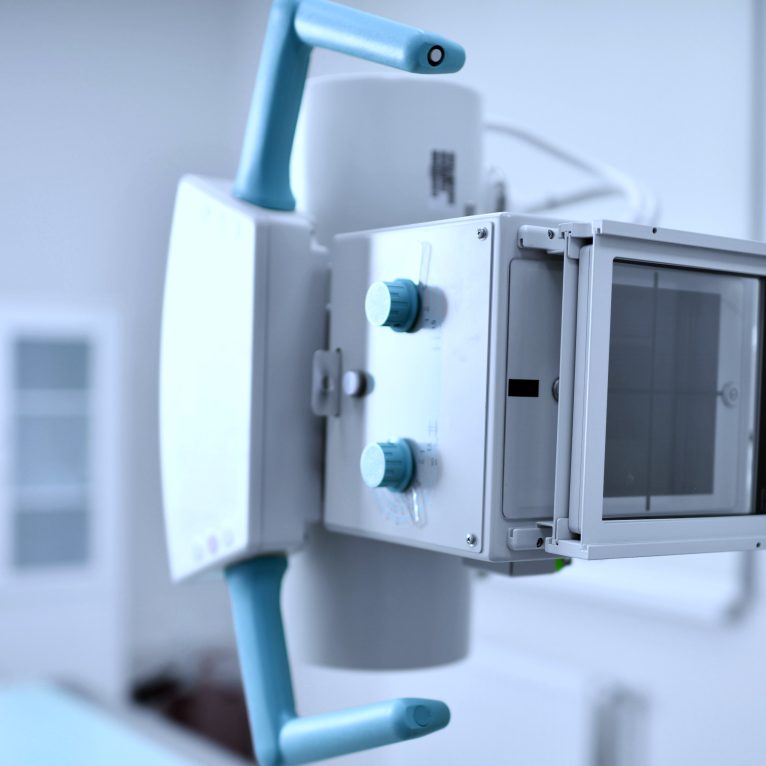
Written by

RSNA is a chance for x-ray vendors to unveil their newest technologies and promote their products’ differentiating features. X-ray technology has previously seen leaps in advancement; first from analogue film to computed radiography (CR), and then the introduction of flat panel detectors for truly digital x-ray imaging. This year’s RSNA did not see the total reinvention of x-ray technology, but instead reflected a competitive market where iterative improvements and step-wise developments underpinned the new offerings on show.
Fluoroscopy
Philips rolled out a number of new imaging solutions this year, including a premium RF hybrid system; the ProxiDiagnost N90 DXR, which highlighted integrated dose management features to monitor both patient and practitioner’s x-ray exposure levels. GE’s new Discovery RF180 was also in action on the show-room floor. This remote RF system addressed the issue of dose by minimising the patient exposure to as low as one frame per second for dynamic imaging, particularly useful for dose-sensitive patients such as paediatrics. These examples highlight the focus on dose management in dynamic imaging, where there is more room for further dose-reduction than in static imaging.
General Radiography
Ergonomic use was a key theme in the mobile x-ray systems unveiled this year. Collapsible tube heads which increase visibility when moving the device were integrated into Fujifilm’s FDP GO PLUS; Shimadzu’s MobileDaRt Evolution MX8 and Carestream’s DRX-Revolution Nano. Carestream’s machine, which was originally unveiled at RSNA 2016 and is set for sale in 2018, further promoted ease-of use through its lightweight design, using nanotube technology so the weight is reduced to <100kg.
Certain flat panel detector vendors focused on increased definition and image quality. Vieworks exhibited their newest panel; the VIVIX-S 1417N, which has an automated exposure detection feature sensitive to levels of x-ray down to 10 nanograys, whilst maintaining image quality. Konica Minolta had technology innovations in both hardware and software on show. Their new AeroDR HD wireless FPDs can be used with Konica Minolta’s REALISM software, which is specifically targeted towards use on soft tissue and delicate calcified structures.
Software
GE displayed the X-ray Quality Application, an analytics based offering which identifies the causes of rejected x-ray images. When an x-ray is retaken because of a poor-quality image, the patient’s exposure is doubled, so by addressing this issue (which could be as high as one in every four images), unnecessary patient radiation exposure could be minimised. GE aims to leverage deep learning technology in the future, to analyse the true rejection reason for an image. This software is an expansion on existing analytics tools, offered by a number of vendors, which collate data on dose, exposure levels and reject rates for dose management.
Several AI solutions for use in genrad were also on show in the halls of RSNA. For example, Lunit exhibited computer aided detection (CADe) software for chest x-ray image analysis called Lunit INSIGHT. The system uses deep learning to analyse images for abnormalities, such as lung nodules, in real-time. The software is available on the web and is free for public use, but does not yet have regulatory clearance. Infervision demonstrated its new AI-DR software, used to detect a variety of cardiovascular lesions using deep learning, including screening for lung nodules. Infervision software is being utilised in 50 health centres in China already.
These vendors will likely soon have company. This year the NIH has made 100,000 images freely available online, offering a large data pool for software developers to train AI for detection of anomalies on x-ray images. This is an indication that further x-ray CADe developments are to come.
Key takeaways
There were a variety of themes running through the different x-ray modalities exhibited at RSNA this year: Fluoroscopy was geared towards dose-reduction, whereas mobile x-ray systems promoting user-friendly, ergonomic features. However, the theme that ran through a number of different modalities was AI.
With the increased competitiveness within the genrad market and the swing towards commoditisation of the systems, the development of new x-ray systems from iterative redesign makes it difficult for vendors to differentiate their newest offerings. AI will increasingly become an area for diversification and therefore a key sales driver, but the traditional themes of patient dose-safety and user ergonomics will continue to be important. With all the possibilities that AI offers to radiology, it is still possible to differentiate without deep learning.
